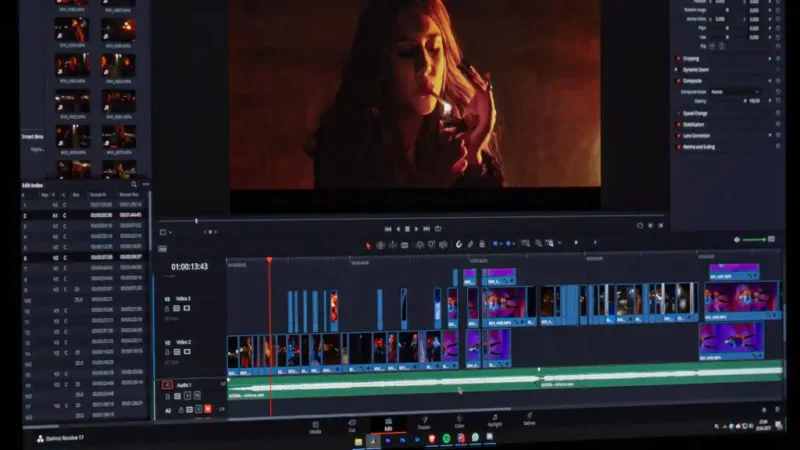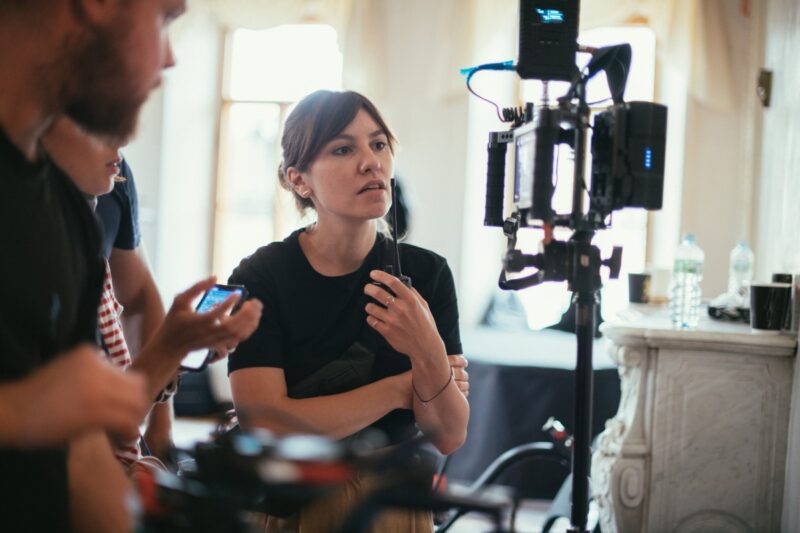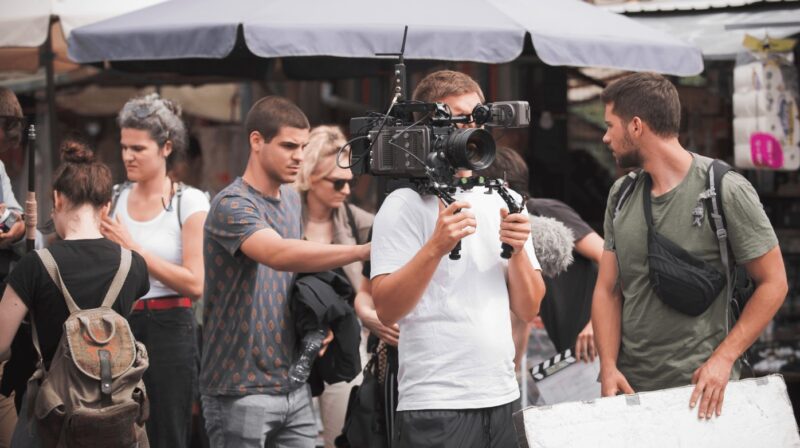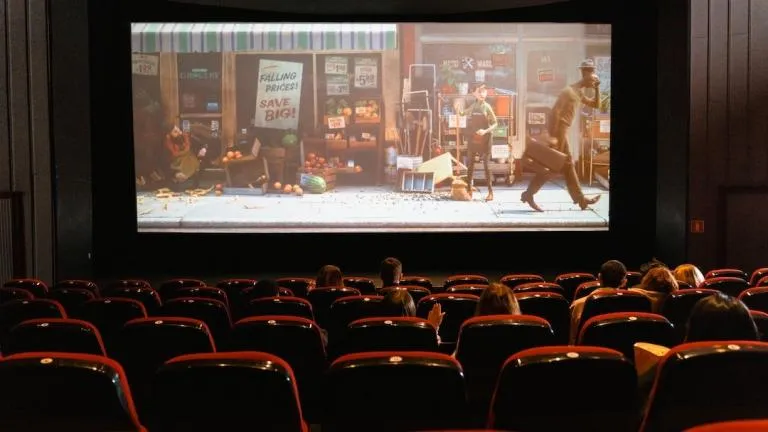Filmmaking on a budget forces you to think outside the box and make the most of what you have. It’s about finding innovative solutions, leveraging available resources, and focusing on storytelling. This approach not only hones your skills but also leads to unique and memorable films.
In this guide, I’ll share practical tips and lessons learned from my own experiences in low-budget filmmaking, so you can achieve more with less.
Craft a story that fits your budget
When writing your script, consider the resources you have access to. Here are some strategies:
Limit locations
Choose a few key locations to minimize travel and set costs. This reduces logistical challenges and allows you to focus more on the creative aspects of filmmaking. Think about places you already have access to, such as homes, parks, or local businesses willing to help.
Small cast
Fewer characters mean fewer actors to pay and manage. A smaller cast allows for more character development and stronger performances. Focus on creating deep, well-rounded characters that can drive the story forward.
Simple effects
Focus on practical effects that don’t require expensive CGI. Practical effects can often be more convincing and add a tangible quality to your film. Use props, makeup, and clever camera techniques to achieve the desired effect.
Plan thoroughly
Pre-production saves time and money. Key steps include:
Storyboard
Visualize each scene to plan shots efficiently. Storyboarding helps you see the film before you shoot it, which can highlight potential problems and solutions. It also serves as a visual guide for the entire team, ensuring everyone is on the same page.
Shot list
Create a detailed shot list to streamline filming. A shot list outlines every camera angle and movement for each scene. This detailed plan helps to keep the production organized and on schedule. It also allows the director and cinematographer to discuss and prepare each shot in advance, making the shooting process smoother and more efficient.
Budgeting
Allocate funds wisely and stick to your budget. A detailed budget helps you track expenses and avoid overspending. Prioritize essential costs and find creative solutions for less critical areas. Regularly review your budget throughout the production to ensure you remain on track and make adjustments as needed.
Find talented, passionate actors
Look beyond traditional casting calls. Consider these approaches:
Local talent
Search for actors in local theaters or acting schools. Local talent can be just as skilled and passionate as professionals, often at a fraction of the cost. They may also be more flexible with their schedules and willing to work for lower rates.
Online auditions
Use platforms like Backstage or social media to find actors. Online auditions can broaden your search and help you find the perfect fit for your film. They also allow you to reach out to actors who might not be available for in-person auditions.
Non-actors
Sometimes, non-professional actors can bring authenticity to your film. Non-actors can provide a fresh and natural performance that professionals might not achieve. Look for individuals who have a genuine connection to the story or character. Their real-life experiences can add depth and realism to your film.
Equipment – use what you have
Leverage available technology. You don’t need the latest gear to make a great film. Modern smartphones have excellent cameras. Many successful films and shorts have been shot entirely on smartphones. They are portable, user-friendly, and capable of producing high-quality footage.
With the right accessories and techniques, you can achieve professional results. Also, choose renting rather than buying high-end gear for specific needs. Renting allows you to access top-quality equipment without the significant upfront cost.
It also gives you the flexibility to choose the best gear for each project. Look for local rental houses or online services that offer affordable rates.
Create your own rigs and lighting setups using affordable materials. DIY solutions can be just as effective as professional gear. Use household items, hardware store supplies, and creativity to build your own equipment. This approach not only saves money but also allows for customization to suit your specific needs.
Assemble a dedicated team
Passion trumps experience. Build a team that believes in your project. For example, you can find volunteers. Film students and enthusiasts may volunteer for experience. Offering opportunities for learning and growth can attract passionate and dedicated individuals.
Volunteers bring enthusiasm and a willingness to learn, which can greatly benefit the production. Provide clear communication, guidance, and recognition to keep them motivated and engaged.
Gather a small crew
A smaller crew can be more efficient and less costly. Fewer people mean less coordination and communication issues, leading to smoother production. A small, dedicated team can work more closely together, fostering a collaborative and supportive environment.
Assign multiple roles
Have team members take on multiple roles. In low-budget filmmaking, it’s common for individuals to wear many hats. This not only saves money but also allows for a more flexible and adaptable crew. Encourage team members to expand their skills and take on new challenges.
Be resourceful with locations
Utilize accessible and free locations. Scout for locations that are:
- Public spaces: Parks, streets, and libraries can be free to use with permits. Public spaces offer diverse and interesting settings without the cost of renting private locations. Make sure to check local regulations and obtain any necessary permits. Public locations can add authenticity and variety to your film, enhancing the overall production value.
- Personal connections: Ask friends and family to use their properties. Leveraging personal connections can provide unique and cost-effective locations. Friends and family may be willing to offer their homes, businesses, or other properties for filming.
- Minimal permits: Choose locations that require minimal to no permits. Some locations have fewer restrictions and lower costs associated with filming. Research local regulations and find places that are film-friendly. This can save time, reduce administrative burdens, and keep your production on schedule.
Edit smartly
Use cost-effective editing software. Editing can be expensive, but there are budget-friendly options. Programs like DaVinci Resolve offer powerful free versions. Free software can provide all the necessary tools for professional editing without the high cost. These programs often include features such as color correction, audio editing, and special effects.
Use online tutorials
Learn editing techniques through free online resources. The internet is full of tutorials and courses that can teach you the skills needed for editing.
In-house editing
If possible, edit the film yourself or with your team. In-house editing saves money and allows for greater creative control. It also provides an opportunity for team members to develop new skills and contribute to the post-production process. Collaborate closely with your team to ensure a cohesive and polished final product.
Promote your film effectively
Leverage social media and online platforms. Promote your film without spending a fortune by using platforms like Instagram, Twitter, and Facebook to reach your audience. Social media provides a cost-effective way to connect with potential viewers and build a following.
Create engaging content, share behind-the-scenes updates, and interact with your audience.
Film festivals
Submit to festivals with low or no entry fees. Film festivals offer a platform to showcase your work and gain recognition. Research festivals that align with your film’s genre and budget. Many festivals provide opportunities for networking, feedback, and potential distribution deals. Participation in festivals can also boost your film’s credibility and visibility.
Crowdfunding
Platforms like Kickstarter or Indiegogo can raise funds and build an audience. Crowdfunding allows you to connect directly with supporters and gather financial backing for your project. Create a compelling campaign with clear goals, rewards, and regular updates.
The bottom line
When you’re working with a shoestring budget, you can’t just throw money at problems. Nope, you gotta get scrappy and resourceful. Think outside the box, and get creative with what you’ve got. That’s when the real magic happens, my friends!
It’s all about storytelling at the end of the day. With a killer script and a passionate team, you can create something mind-blowing even with limited resources.







